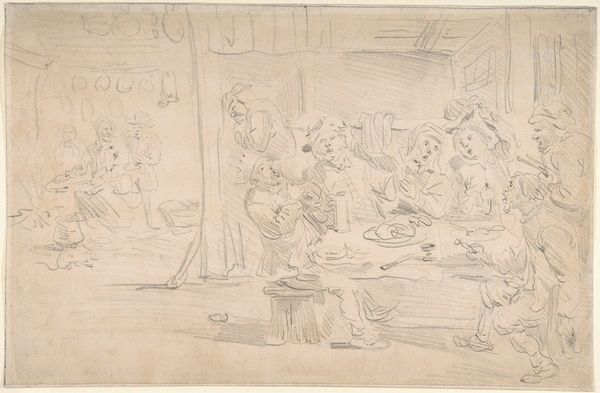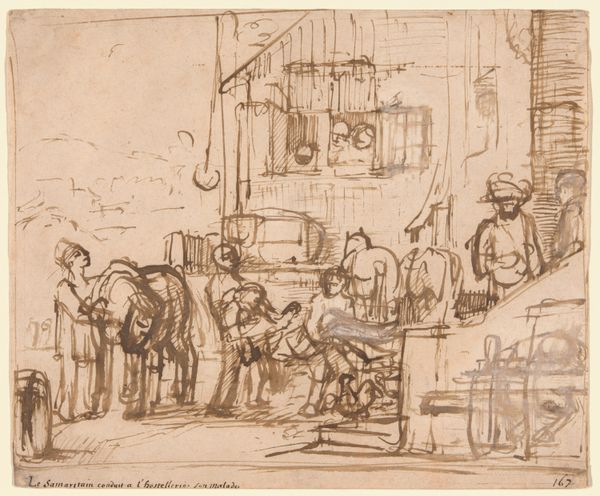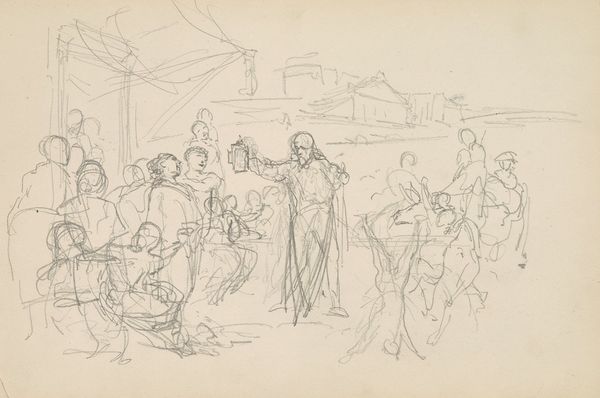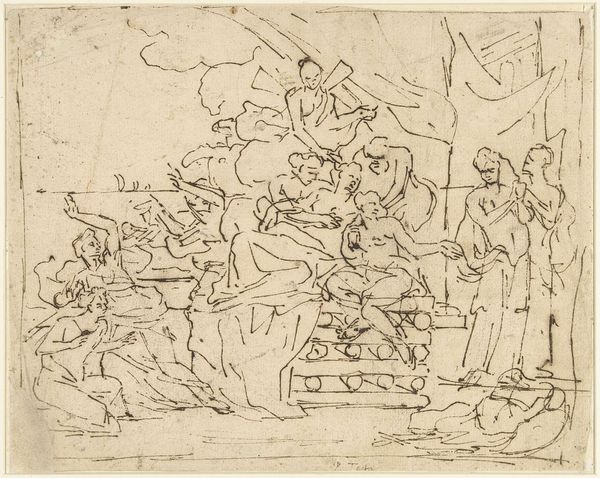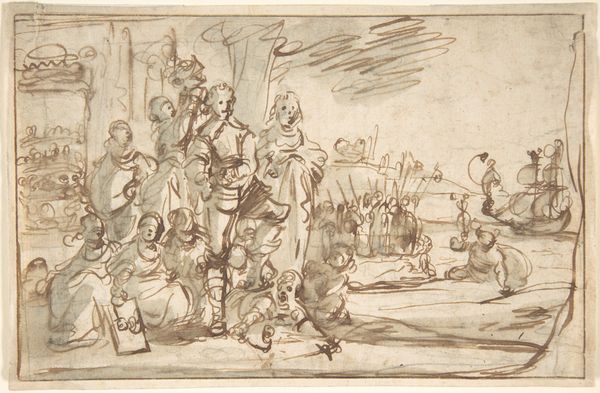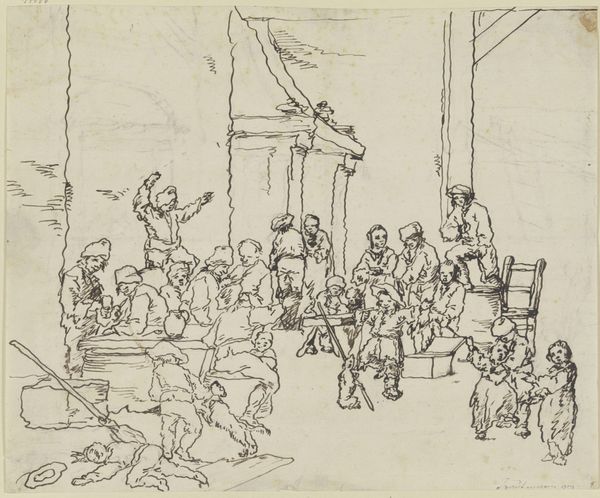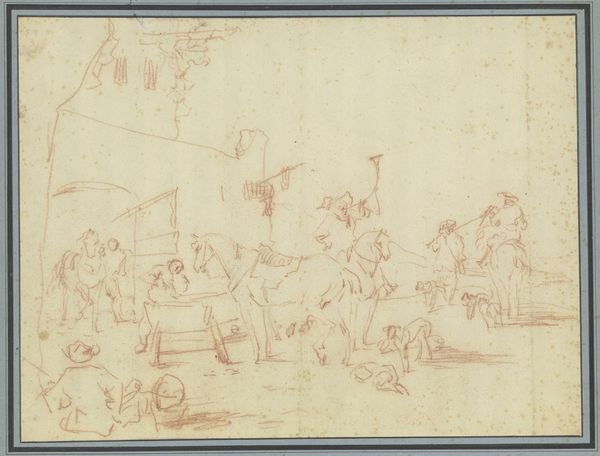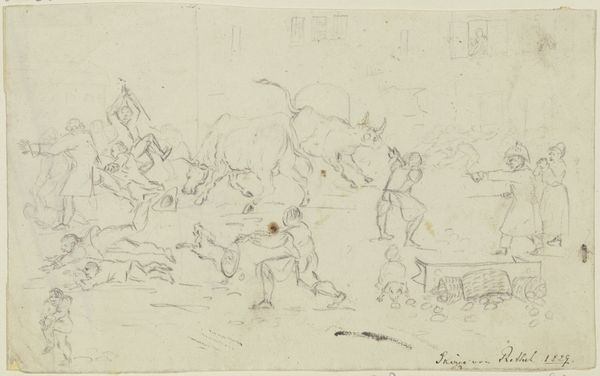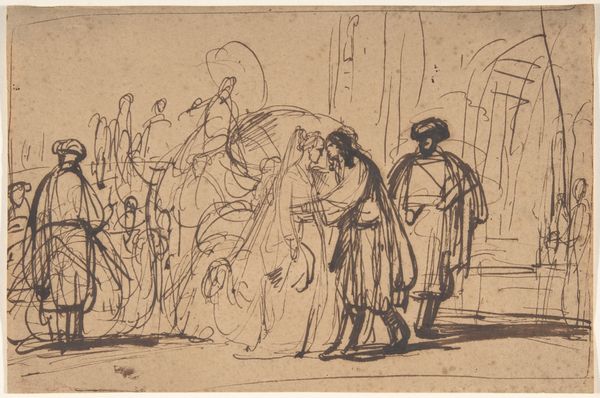
Copyright: Public Domain: Artvee
Curator: This lively ink drawing, entitled "Herbergscène met dansend boerenpaar," or "Tavern Scene with Dancing Peasants," was created by James Ensor around 1880-1885. What’s your first impression? Editor: I’m instantly struck by the energy, even in its unfinished state. It feels like a glimpse into a fleeting moment, full of chaotic joy and rustic charm. Curator: Exactly. Ensor, while known for his later, more avant-garde works, often explored genre scenes in his early period, revealing much about the social fabric of his time. What does the scene evoke for you in terms of social dynamics? Editor: I sense a celebration of simple pleasures. It's almost like a Breughel painting stripped down to its essential lines – capturing the uninhibited spirit of rural life. I can almost hear the fiddler! But there's also something faintly melancholic about it. Curator: That’s an astute observation. The sketchy, almost frantic lines might imply not just energy but perhaps also the transient nature of these gatherings. Consider the socio-economic context. These tavern scenes were often spaces of community, but also of potential unrest and social negotiation for peasants. Editor: True. And there's a lovely, unpolished feel to it – a deliberate rejection, maybe, of stuffy academic painting? It feels so immediate, almost like he was right there, quickly sketching what he saw. As if, were it any slower, he would miss that candid gesture. Curator: That immediacy aligns with emerging Realist and Impressionist sentiments of the time—seeking authenticity. But it could also speak to Ensor's artistic personality already gravitating toward the unconventional. Editor: I'm definitely seeing some subtle rebellion here! Beyond just capturing a scene, I wonder if it’s an appreciation of the simple folk of Belgian society... Or maybe a judgment on all that drinking! Ha! Curator: A complexity that speaks volumes, given the debates around class and representation prevalent then. He occupies the privileged artistic position from which he must evaluate his subject, making such a reading totally valid. Editor: Looking at the composition one last time, I really like the contrast between the static, more traditionally posed musicians and the swirling couple – like two different worlds colliding in one drawing. Curator: Precisely. Ensor gives us both the establishment and the joyous break from it within a single frame. Well, it's been a treat looking at this with you. It always excites me when people read works like this one with open eyes, able to interpret a wealth of material that can speak to both contemporary art history and modern sentiments.
Comments
No comments
Be the first to comment and join the conversation on the ultimate creative platform.
